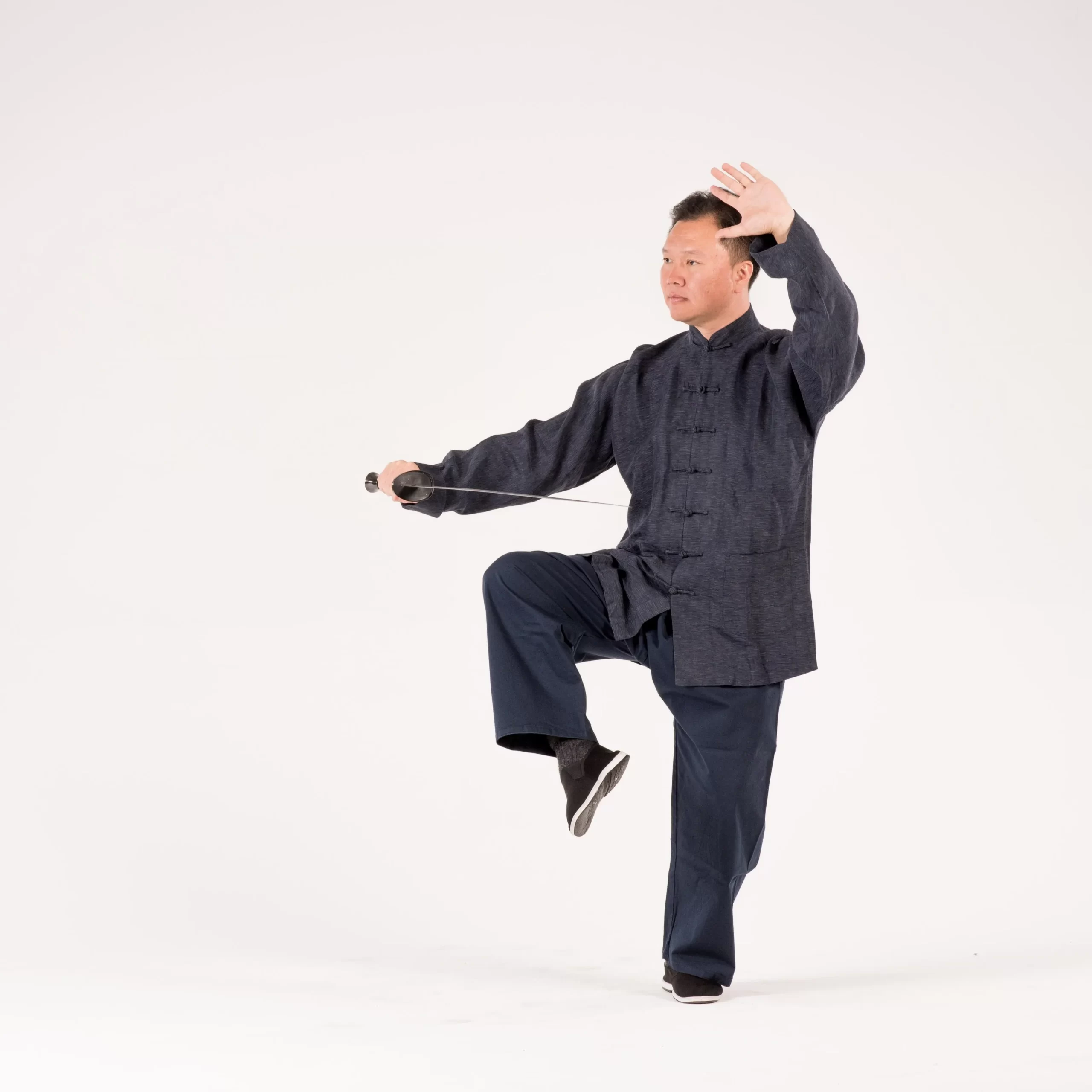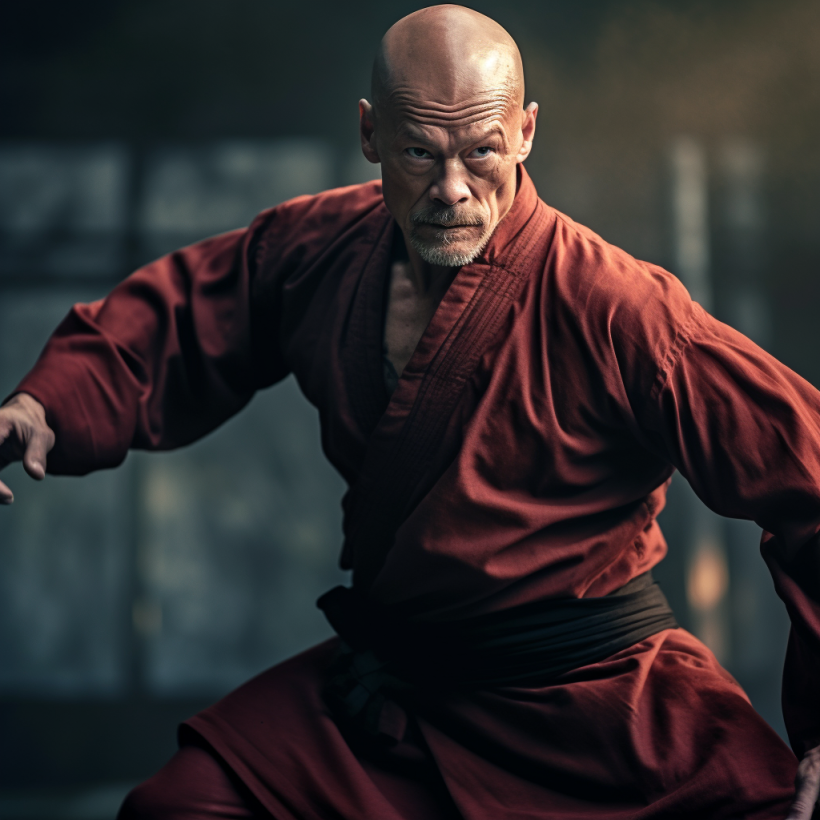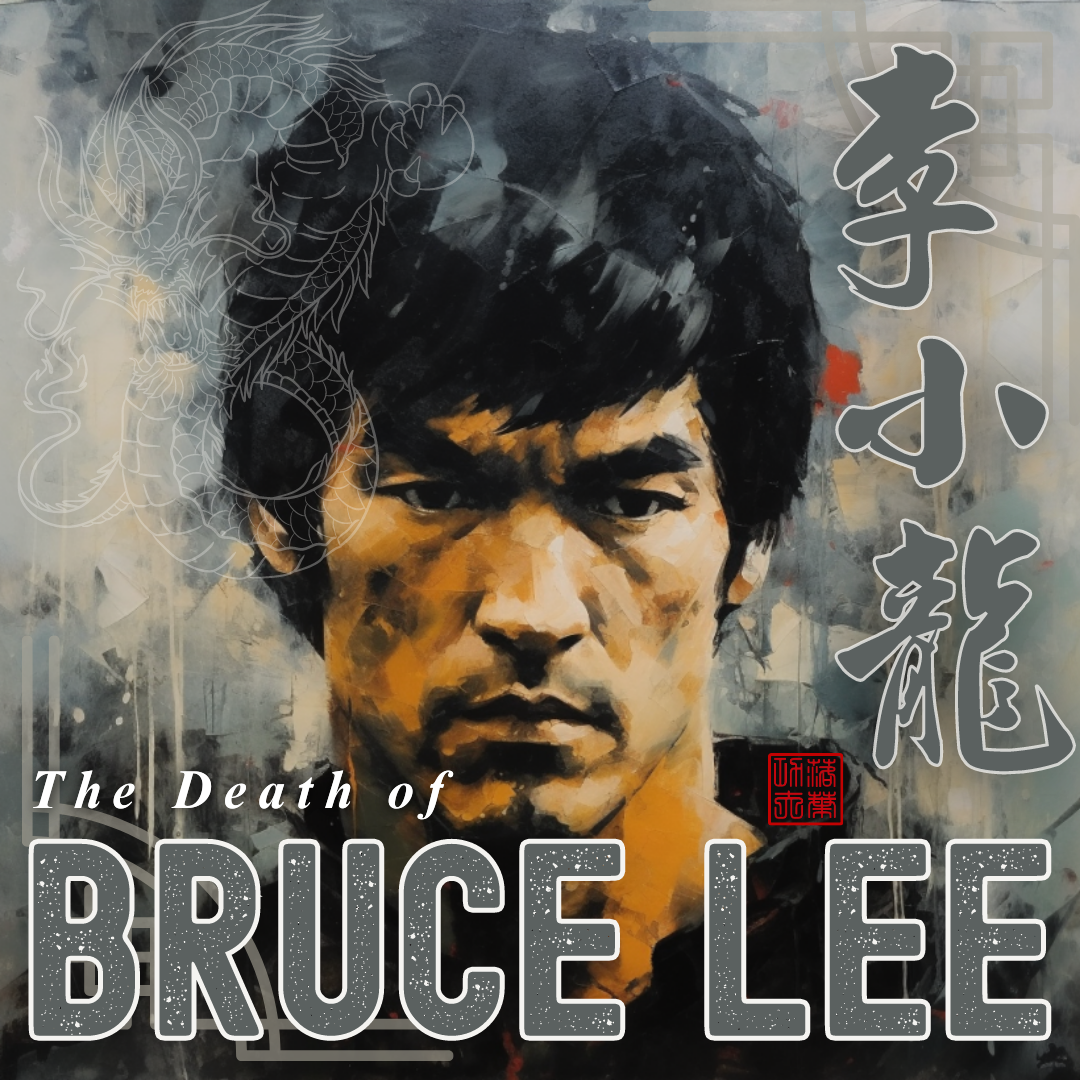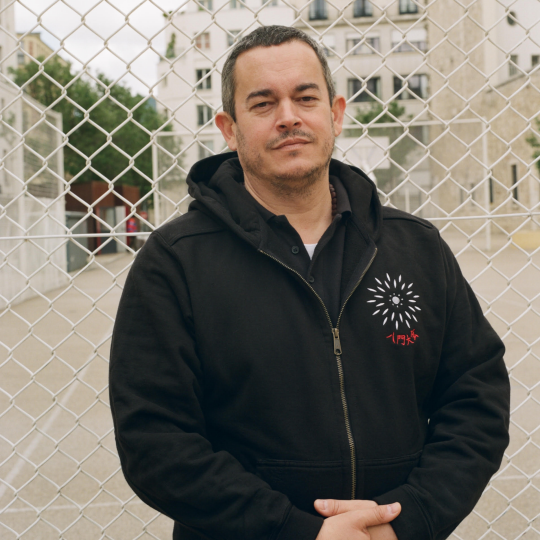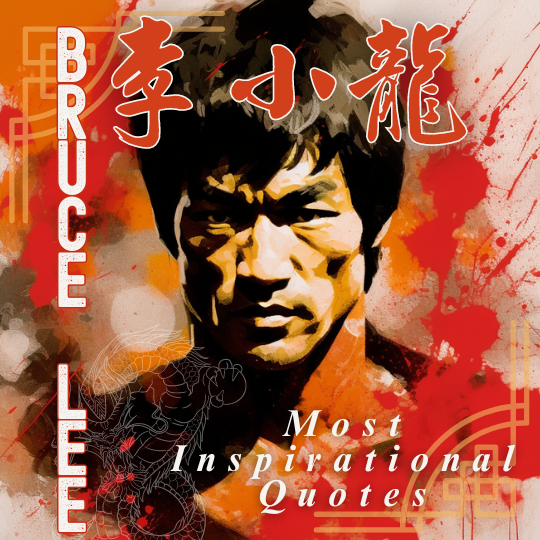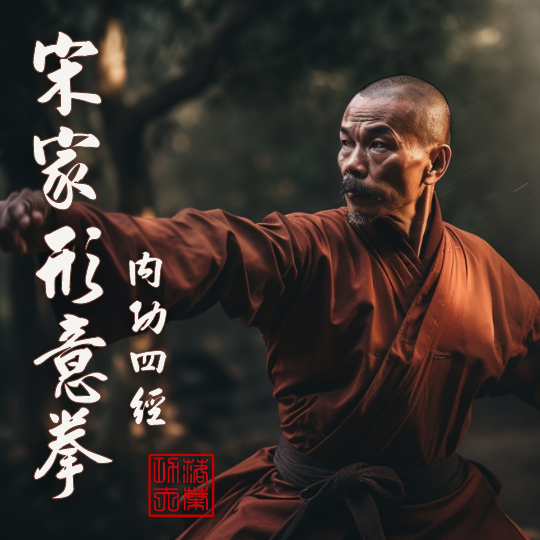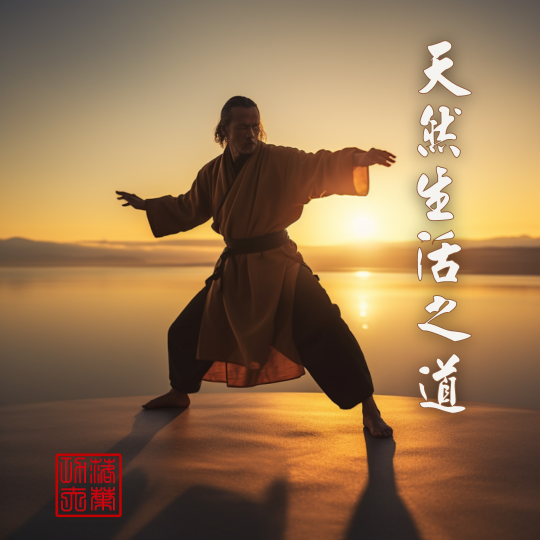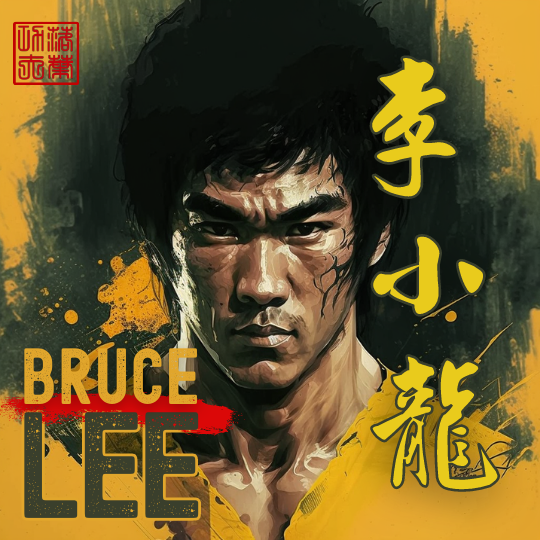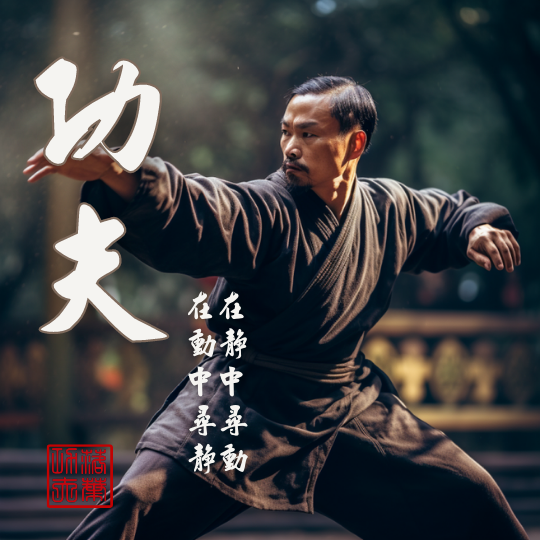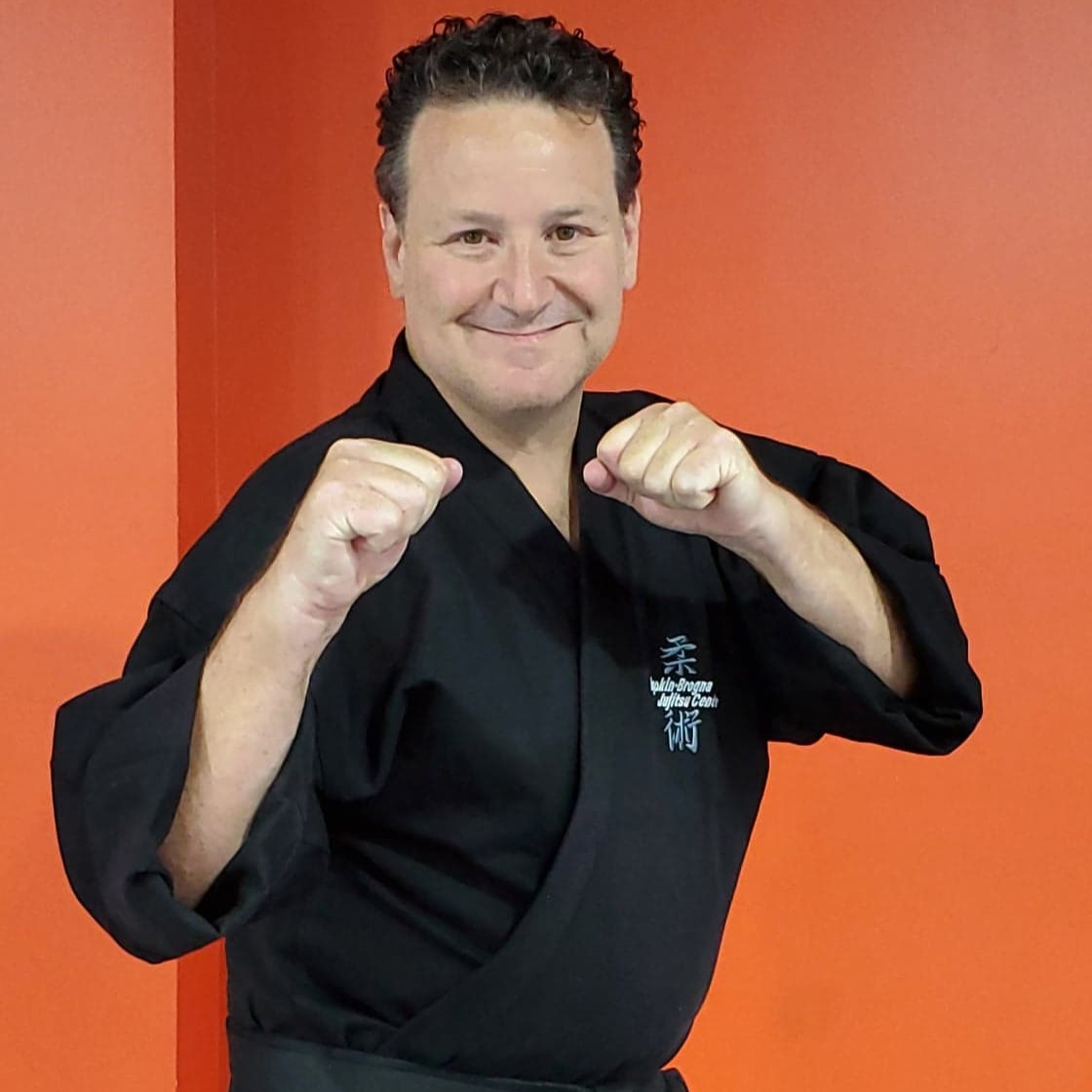
The Crouching Tiger of Daito-ryū
Daito-ryū, like a tsunami, marries the fluid elegance of water’s movement with devastating potential. Just as the ocean’s waves can transform from serene beauty to overwhelming might, the techniques in Daito-ryū can gracefully shift from subtle redirections to crashing takedowns. In both, there’s an inherent understanding of the power that lies beneath the surface, waiting for the precise moment to be unleashed.

Just as a tsunami embodies the raw force of the sea, Daito-ryū represents the culmination of budō, where fluidity and devastation walk hand in hand. Within the swirling currents of Daito-ryū’s waters, a master moves silently, like a hidden dragon concealed beneath the depths. While his name may not resonate loudly in mainstream circles, he emerges with a formidable yet unassuming presence for those fortunate enough to cross his path.
Enter Howard Popkin, a martial arts instructor whose skill unfolds as a captivating dance of precision and grace, rivaled only by his unparalleled humility. While the world of martial arts often glorifies flamboyant showmen, hidden gems like Howard represent the deep-rooted spirit and essence of the way. In a landscape brimming with spectacle, known simply as “Howie” among friends, his quiet dedication and profound understanding of Daito-ryū highlight the core values of budō.
Howard Popkin and the Art of Daito-ryū
“You’re chubby, and you’re Jewish; you should learn to defend yourself,” Popkin quoted his Brooklyn-born father, whom he describes as a “realist,” explaining his initial plunge into the martial arts world. The sentiment, although humorously frank, was the spark that ignited his lifelong journey through the intricate corridors of jujitsu. Howard’s first teacher was Jeff Lovering, a local instructor who introduced him to Haku-ryū Jujitsu, an American offshoot related to Daito-ryū. “His style was very good, solid martial arts,” Popkin noted.
Howard’s journey saw him delve into judo and karate while in college before a chance encounter with Roy Goldberg. “What he was teaching at that time was… brutally effective,” Popkin said, describing a combination of jujitsu, Aikido, and other styles Goldberg was practicing. It was an eclectic blend that Popkin seemed to respect but treaded carefully around, emphasizing the importance of preserving the boundaries of each art.

And then there was Daito-ryū. “The system’s mechanics were very different,” Popkin admitted, explaining his draw to this particular style. Under the guidance of Okamoto Seigo in Japan, his connection to Daito-ryū deepened.
Delving Deeper: Daito-ryū and the Essence of Mastery
Okamoto Seigo, the founder of Daito-ryū Aiki-jujutsu Roppokai, hailed from Yubari City, Hokkaido, born in 1925. In 1963, he began his training under Kodo Horikawa, the founder of Daito-ryū Aiki-jujutsu Kodokai and a prominent disciple of Sokaku Takeda.
The electric hum of curiosity charged our conversation as Howard recalled his pivotal first meeting with Okamoto, the Daito-ryū master who would reshape his journey to mastery. Howard describes his teacher as “a wonderful human being, not a religious man but spiritual” with a deep love of sake. “I read about him on the internet,” Popkin begins, painting a picture of the days when the internet was still an unusual resource for such connections.
His story with Okamoto began with a simple letter translated into Japanese by a friend. Okamoto responded casually; Howard could train if he came to Japan. Without hesitation and driven by a thirst for authentic knowledge, Howard took the plunge, traveling to The Land of The Rising Sun to immerse himself in the heart of the discipline.

A Whole New World
His first steps in the dojo, however, were disorienting, to say the least. “I sat down [after class] on the side and… My father said, ‘What’s with the distressed look on your face?’” Popkin confides. His reflection on that first lesson in Japan was a mix of humility and wonder: “I just did an hour and a half of techniques… And I didn’t understand one thing the guy did tonight.”
This was the beginning of Popkin’s deep dive into the sophisticated world of Daito-ryū, an art that some compare to the “internal” arts of Chinese fighting traditions, known for their development of “unusual” power. But rather than presenting these principles directly, Okamoto’s teaching kept the secrets of the Old Masters hidden in plain sight. “Little by little,” Popkin reminisces, “once you got a handle on external motions, he would start to address ‘well, maybe try to rotate this, maybe try to lift that.'” It wasn’t a straightforward lecture on “internal” versus “external,” but an immersive lesson in feeling and understanding.
Unraveling the Mystery of Aiki
Our conversation shifted into the mysterious and often contentious realm of aiki (合気).
- 合 (ai) typically means “joining” or “harmony.”
- 気 (ki) often refers to “spirit,” “energy,” or “breath.”
In the context of martial arts, “aiki” is often translated as “harmonizing,” “joining,” or “combining energy.”
To those entrenched in the martial arts world, the term aiki can spark heated debates. Some view it as a nearly mythical force, while others see it as nothing more than highly refined technique. Its definition often remains as elusive as grasping smoke in one’s hand, and indeed, many masters and practitioners hold varied interpretations.
I probed into Howard’s experiences with this concept, especially as taught by Okamoto. Howard reminisced, “There were lots of discussions around it. Every student who showed up would ask him. And he always gave the same answer; it was his ‘for public consumption’ definition.
He described it as circular motions, timing your breathing correctly, and using coordinated body movements. But it was never a definition you could really use.”
Howard warmly remembered a signature demonstration by Okamoto. The old master would first gauge a student’s stability, ensuring their stance was firm and grounded. Once convinced, he would playfully employ the principle of rotation. Students would find themselves flying effortlessly, a profound contrast to the raw use of brute force. This wasn’t merely a display of technique; it showcased the principle of the soft overcoming the hard and the circular defeating the straight.

He continued, describing the fragmented journey to mastering aiki. Okamoto used to say that any solid technique in martial arts has numerous components. Just when a student feels they’ve acquired a handful, believing they’re on the path to mastery, Okamoto would gently remind them of the vast expanse still left to learn. It was a humbling analogy: “Even if you’ve mastered 10 components, you might still be missing the other 90.”
As our dialogue continued, Howard shed light on the practical aspect of their training. Despite the language barrier – with Howard’s limited Japanese and Okamoto’s basic English – the essence of their lessons transcended words. Okamoto would challenge Howard with a barrage of techniques in a single session. Instead of drowning in the complexity, Howard focused on individual elements like footwork, expansion, contraction, or rotation. This focus helped him understand the underlying thread connecting each technique, an approach he and his long-time training partner Joe Brogna found invaluable.
Enter Dan Harden – The Ronin of Daito-ryū
Describing himself as “always one to give credit where it’s due,” Howard felt the need to pay tribute to a man named Dan Harden.
“I learned a lot of [aiki] exercises and stability training from Dan Harden,” he revealed, his voice hinting at gratitude mixed with deep respect. “I think I picked them up from him a little faster…because of my experience with Okamoto.”
“[Harden] was looking for body skills,” Howard remarked. Dan was on a quest to unlock the secrets of the Old Masters. This enigma, often articulated in Chinese as shenfa (身法) or lik hok (力学) in I Liq Chuan, went beyond mere technique or style, delving deep into the very essence and mechanism of so-called “internal “strength/aiki. Learning from Okamoto and Harden and bridging their teachings was like capturing lightning in a bottle for Howard
The dynamics between Harden’s and Okamoto’s teachings were starkly different. While Okamoto, revered in the martial arts community, often taught the unification technique from a gentle grab or push, Harden had a much more intense approach. “With Dan, there was always a ton of pressure,” Howard explained. “If you couldn’t make it work under the pressure, it was kind of useless.”.
Stand Up Guys
Interestingly, in an age of combat sports, where “jujitsu” immediately conjures images of ground fighting, Popkin clarifies that 99% of his training with Okamoto was standing up, rooted in Japan’s sword-based culture. Equally compelling was Okamoto’s gentle approach. Unlike some trainers who prove techniques through pain, Okamoto displayed his mastery with gentleness, never needing to hurt to prove a point.
“There was never a time when he would do a joint locking technique on me where he actually would put me in pain. He would show us where it was, but he never needed to get to the point where you were tapping, or you knew your arm was gonna snap,” Popkin reflects, his voice echoing with reverence. “He was very comfortable with his abilities and knew it worked.”
Howard’s recollections of the old master remind me of my own teacher, GM Sam Chin. Approaching 70, the old tiger remains tremendously formidable. Like a lion playing with its cub, he can unleash a display of terrifying power, turning even big guys and long-time students like me into ragdolls at will without ever causing us harm.
Delving into Daito-ryū’s Dynamics
“When most people think about soft martial arts, they think non-impact,” Howard explains. “I want to be able to use my body to develop devastating power, or devastating throwing or locking… softly.”
The term “three beers loose” floats back into my mind. A cue Howard had used during his time in Arizona, reinforcing the notion of “relaxed readiness,” highlighting the counterintuitive strength that exists in relaxation, a commonality between Daito-ryū and I Liq Chuan.
As the conversation delved deeper into the principles, Howard articulated, “Don’t meet force with force. Okamoto would move around it when met with resistance, never clashing head-on. This isn’t about avoiding contact but preventing a direct power struggle at the point of contact. A straight push, force against force, contrasted with maneuvering around or under an opponent.”
Drawing connections between Daito-ryū and I Liq Chuan, he observed, “I’ve seen similarities in your art, especially in the spinning hands videos. How you respond without directly opposing force reminds me of our principles, even if I’m just a novice in understanding your system.”

Although this last observation by Howard is debatable, I didn’t challenge him on it at the time, instead preferring to let him speak freely. I Liq Chuan, in fact, does initially train to meet force head-on to “catch the tip of the spear,” only after which can it be redirected. Having experienced Howard’s skill firsthand, it’s likely that, ultimately, we’re in basic agreement but using slightly different means to the same end. It would have been a much longer conversation that would have detracted from the spotlight I wanted to shine on Howard, so I let his remark stand unchallenged.
At this point, Howard presented a nuanced observation regarding the many branches on the tree of Daito-ryū that exist today: as opposed to “one way for all,” Takeda’s teachings were tailored. Takeda, a monumental figure in the martial art’s legacy, emphasized an individualized approach to combat based on body type. Whether you were tall, stout, agile, or sturdy, he had a specific approach for you. Yet, as Howard observes, these personalized teachings often became an orthodoxy when passed down, obscuring the vicissitude of Daito-ryū’s adaptability. “People say ‘this is it.’ Well, that’s what your teacher was taught. But my teacher got taught this,” he points out, emphasizing the breadth of the art form. “So which one is it? [It’s all of them.]”
Wisdom for the Uninitiated
Having wasted many hours on dead-ends in the early part of my martial arts career, I’m always interested to hear about what unique insights others with a lifetime of experience have that can help the next generation avoid wasting their precious time. “What do you think are some of the most common mistakes that beginners make?”
With a pause that suggested years of reflection, Howard began, “I think it’s very difficult when you start taking martial arts to have any clue what you’re actually looking for.” He recalled his own fortunate beginnings, noting, “I got lucky when I started.”
I couldn’t agree more with Howard on this point, having myself started with I Liq Chuan belaboring under many false assumptions and delusions about the secrets of the Old Masters, and like Howard, it was only through sheer luck, or perhaps providence, that I committed myself to I Liq Chuan.
“One of the biggest mistakes is not researching a little bit… not seeing what’s out there.” A reminder that while martial arts begins with the physical, its depth and impact on a practitioner’s life are largely influenced by the teacher’s character and the discipline’s ethos.
The Enduring Value of Martial Arts
I think, understanding that the subject would have taken us on a detour we didn’t have the time to explore, Howard switched gears to another common misstep: a shallow perception of martial arts. “Most people think martial arts is [just] punching and kicking. But there’s so much more to it than that.” His voice hinted at the vast spectrum of martial arts, stretching far beyond the visible.
I asked, “So when you say that martial arts is so much more than just punching and kicking, what do you mean by that?”
With decades of experience coloring his response, Howard shared, “The physical and mental confidence that one gets from knowing they can control a situation is tremendous.” But it wasn’t just about control. The martial arts, according to Howard, conferred a transformative calm. Laughing, Howard said, “I think you’re one of the few guys that can ‘out-calm’ me. And I attribute that entirely to our study of martial arts.”
The Virtue of Discipline, Courage & Integrity
Howard’s gaze deepened, building on our discussion about the depth and essence of martial arts beyond mere technique. “Traditional martial arts have tremendous value. First, in their ethics,” he began, “the student-teacher relationship is tremendous.” His respect for the discipline was evident. “The values imparted in traditional martial arts are also really wonderful, especially for children.”
Fascinated, I asked, “What are you doing to ensure those values are passed on to your students now?” His reply revealed a blend of modern teaching methodologies infused with the wisdom of the Old Masters. Howard spoke about a teacher from Rhode Island, Greg Horton, who had a unique method of teaching children. “His system allows you to impart the traditional life skills, so to speak, while doing martial arts,” Howard explained.
Desperate for a tangible understanding, I pleaded, “Can you give me just a small example?” He illustrated a scenario where, after initially teaching a child a stance or punch, the child is then invited to teach the same to the rest of the class. The method intrigued me. It resonated with my own approach to adult classes, giving students ownership and ensuring the art lives beyond the teacher.
Looking Back
Talking with Howard, I was struck by the depth of his journey in martial arts. Looking for additional pearls of wisdom to pass on to the next generation is asked, “If you could go back in time and talk to your younger self, what advice would you give?” I pondered aloud.
Howard quipped, “Keep your hands up without missing a beat.” A ripple of laughter passed between us, yet a more profound sentiment lay beneath that. Howard continued, “I would have met Okamoto 10 years earlier.” The note of wistfulness was unmistakable.
His deep respect for Okamoto illuminated his words. “He was such an amazing person. I would have loved to spend more time with him.”
“The price of anything is the amount of life you exchange for it.”
Henry David Thoreau
Wedding At Tokyo Station
In the glow of reminiscing about his precious time with Okamoto, Howard segued into another heartwarming tale that showcased the deep love between teacher and student. With a twinkle in his eye, he began, “I don’t know if you know the story with me and my wife…”
At a pivotal point in his martial arts journey, Howard was approaching a significant rank. In Daito-ryū, one eventually arrives at the fourth-degree black belt. Then, the master decides whether to bestow an assistant teaching license upon the student. To Howard’s astonishment, Okamoto, in a room filled with peers, announced that while Howard was ready for this elevation, he wouldn’t receive it. The reason?
Okamoto displayed caring for his students’ happiness and well-being beyond martial arts and expressed a playful concern that Howard wasn’t married. In Japan, turning 40 and being single was frowned upon – the translator amusingly called such a man a “scoundrel,” though that might’ve been a polite substitution for Okamoto’s actual words.
Laughing, Howard recalled his rebuttal, pointing out their shared fishing and drinking adventures, activities that, he jokingly claimed, married men might find challenging. In a light-hearted dare, Howard challenged Okamoto: if he wrote a proposal in kanji saying, “Will you marry me,” he’d parade it through Tokyo Station on a T-shirt.

Okamoto’s playful acceptance took Howard by surprise, but the twist in the tale is that he met the love of his life just six weeks later. While he didn’t meet her at Tokyo Station, in a gesture that spoke volumes of their bond, Okamoto’s calligraphy was almost like a talisman, catapulting his student forward into the next phase of his life as a happily married family man.
Chuckling, I responded, “That’s a great story,” a testament to the depth of respect, camaraderie, and affection between master and student.
Sacred Steps Forward: The Unforeseen Path of a Legacy
Transitioning to more recent events, I asked, “Howard, how did you begin your journey in the seminar circuit?” What unfolded was the story of an unexpected series of events, a display of the unpredictability of life, and the magnetic pull of genuine skill.
In ancient Japan, it was not uncommon for martial artists to journey through the land, driven by the quest for mastery and the lure of legendary dojos. Those were days when tales of skill became the stuff of lore, shared beneath cherry blossoms and amidst misty mountains.
Echoing that timeless narrative, a curious Aikido-ka found his way to Howard’s dojo. The insights he gleaned there had a deep-rooted significance. At a subsequent seminar, equipped with this quiet wisdom from Howard, he caught an experienced instructor off-guard and floored him, reminding everyone of the profound power of Daito-ryū.
That move, that singular moment of skill, became a spark of intrigue. “Where did you learn that?” the floored instructor had demanded, astonishment evident.
“From Howard Popkin,” was the Aikido-ka’s simple yet impactful reply.
Intrigued and impressed, the seminar instructor wasted no time. He sought Howard out, eager to understand the depth of his techniques and artistry for himself. From this serendipitous chain of events, Howard’s journey took a new turn, leading him to US and UK seminars, expanding his impact far beyond his humble dojo’s walls.
Conclusion
The Depth of Discipline and the Bonds We Forge

As our conversation concluded, I was struck by how intricately the martial arts journey is woven with the ties that bind us. My discussion with Howard was not just an exploration of techniques or traditions; it was a deeper dive into the profound relationships we cultivate and the meaning they infuse into our practice.
Howard’s tales, from his charming proposal story to the intricate lessons of Daito-ryū, echo a world where discipline intertwines with kinship. His journey of over 40 years on the mats is a monument to the unwavering spirit of commitment – a beacon for someone like me.
There’s genuine humility in learning from someone who has spent twice as long in the arts, witnessing the ebb and flow of tradition and evolution. I’m honored to call Howard both a friend and a mentor. It’s not just for the stories or insights but for exemplifying how relationships – with our mentors, our peers, and ourselves – deepen the significance of our lives.
His dedication inspires and reminds us of the rich tapestry of martial arts, woven with threads of knowledge, understanding, and the relationships we cherish.
Afterward – Connect With Howard
Interested in diving deeper into the teachings of Howard Popkin? Head over to his official websites, http://www.ginjukai.com/ or https://popkinbrognaselfdefense.com/, or follow the Ginjukai Facebook page.
With his long-time training partner, Joe Brogna, Howard manages the Popkin-Brogna Jujitsu Center in West Hempstead on Long Island. Though he’s taken a step back from an exhaustive seminar circuit to dedicate time to raising his son, his teachings continue to resonate.
For those eager to explore the depths of Daito-ryū, the recommended read is “Daito-ryū Aiki Jujutsu” authored by Okamoto. While it’s currently out of print, the book remains accessible on Amazon for enthusiasts and scholars alike.

Read More!
- Is Pepper Spray Effective For Self Defense?
- Why Hand-to-Hand Combat Still Matters in the Firearm Era
- What is a Kung Fu Master Called?
- Woman Fight’s Off Her Attacker At The Gym!
About the Author

Ashe Higgs, I Liq Chuan Master Instructor & L2 Nutrition Coach
Ashe is a highly skilled martial arts instructor and certified nutrition coach with over two decades of experience in the field. He holds a Master Instructor certification in I Liq Chuan under Sam FS Chin, making him one of only several individuals worldwide to hold the title. He has taught classes and workshops worldwide and is passionate about helping others achieve their fitness and wellness goals.
With a background in full-contact fighting and a Level 2 certification from Precision Nutrition in nutrition coaching, Ashe is a well-rounded expert in the fields of martial arts. In addition to his expertise, he has a wealth of experience in teaching and mentoring others. He has a natural ability to connect with his students and inspire them to reach their full potential.
Disclaimers & Conflicts of Interest
I am not a doctor or a lawyer, and the information provided should not be considered medical or legal advice advice.
The information provided is for educational and informational purposes only and should not be used as a substitute for professional legal or medical advice, diagnosis, or treatment. Consult your doctor or a qualified healthcare professional before making any changes to your diet, exercise routine, or lifestyle.
Please note that some of the links provided in this content may be affiliate links, meaning that I may receive a small commission if you purchase through them. However, please rest assured that any products or services recommended are based on my personal experience and belief in their value. I only recommend products or services that I have personally used and believe in.







